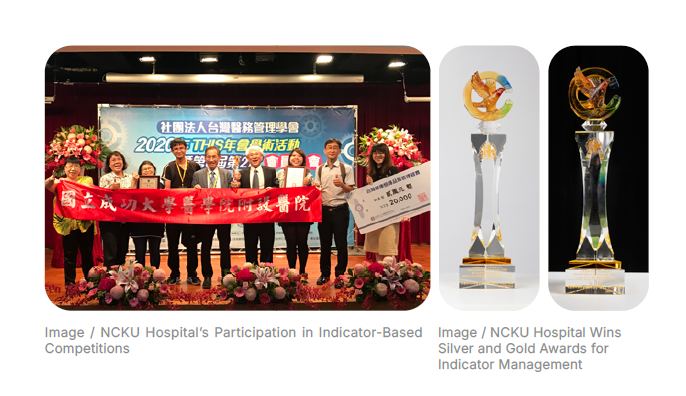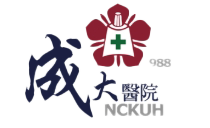Quality Indicator Management
Quality Indicator Management
-
Development of Quality Indicator Promotion
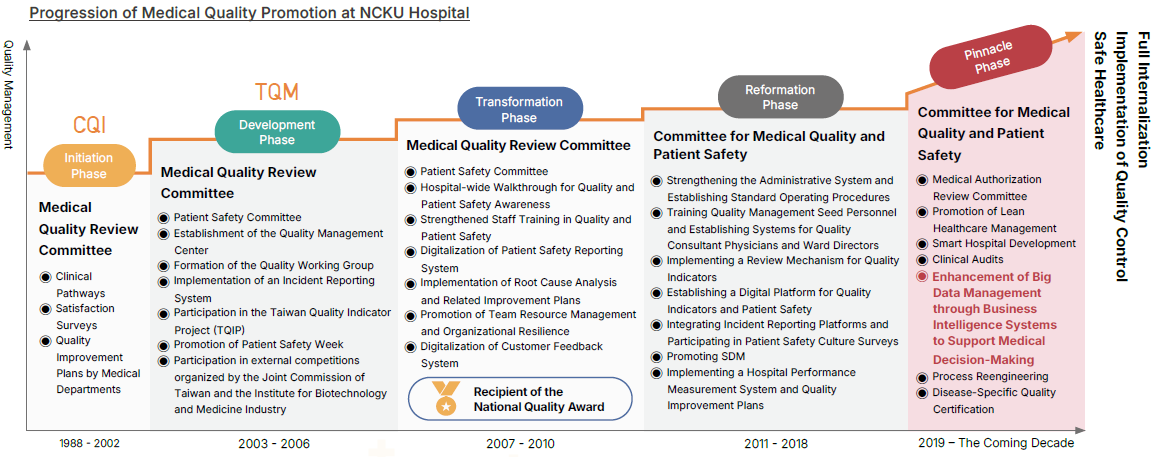
-
Continuous Improvement Mechanism for Quality Indicators
To foster a culture of ongoing quality improvement within the Hospital, each clinical unit designates both a “Quality Indicator Reporter” and a “Quality Indicator Leader.” The Quality Indicator Reporter is responsible for collecting and reporting indicator data, providing data analysis, and serving as the liaison with the Quality Center. The Quality Indicator Leader, typically a physician, is responsible for planning and coordinating indicator analysis and improvement efforts, and for strengthening oversight of indicator monitoring. The Quality Center centrally manages all hospital-wide indicators and has established an information system with real-time analysis and alert functions to enhance monitoring efficiency and responsiveness, thereby cultivating a strong culture of quality improvement.
To further strengthen this culture of continuous improvement, the Quality Center promotes a dual-direction quality culture of “top-down” and “bottom-up” approaches for sustainable advancement. In addition to routine cross-team review mechanisms for indicators, the Quality Center has introduced a “Quality Consultant Physician System,” appointing physicians with experience in clinical quality promotion to serve as consultants. When abnormal or warning signals appear in indicators, they are reported to the Medical Quality Indicator Task Force and reviewed strategically in collaboration with the quality consultant physicians, ensuring comprehensive improvement in quality.

The Hospital monitors various clinical care indicators in accordance with its annual Medical Quality and Patient Safety (MQPS) plan, as well as its mission of “providing comprehensive medical services,” and strategic goals of “delivering holistic, high-quality healthcare” and “ensuring patient safety and convenient access to care.” The categories include Taiwan Clinical Performance Indicator (TCPI), Quality Improvement Program (QIP), hospital-wide common indicators, and department-specific indicators (including annual patient safety goal indicators). As of 2024, a total of 828 medical quality and patient safety indicators have been established.
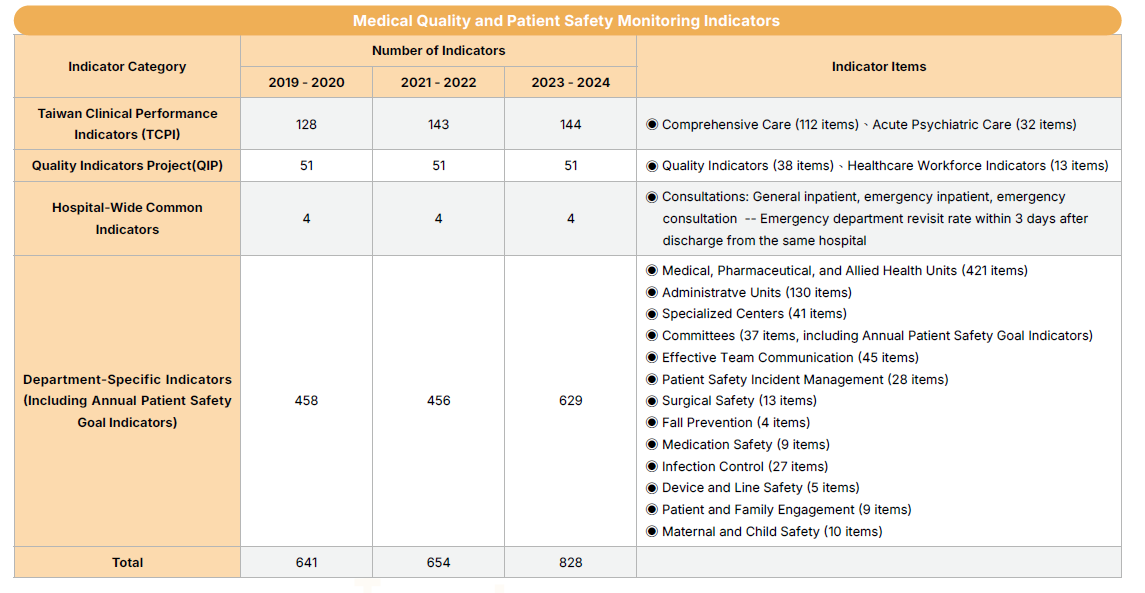
-
E-Platform for Indicator Management
To enhance the efficiency of indicator management, data accuracy, automated data collection, accessibility, and real-time availability, the Hospital has established an “E-Platform for Indicator Management” to enable real-time analysis of monitoring, review, improvement, and outcomes. The platform integrates outpatient, emergency, and inpatient systems, transforming the previous manual input process into automatic data import through the hospital information system. It is also integrated with the Business Intelligence (BI) system, offering real-time query charts and data drilling features. Through a visualized interface, indicator managers can more easily interpret indicator trends and apply the insights in the strategy formulation process.
In addition, the Hospital has developed a case collection system for indicator-related diseases that integrates outpatient, emergency, and inpatient systems. This system structures an indicator information platform that imports data including patient demographics, medications, procedures and treatments, nursing guidance, and discharge follow-up management. The system assists physicians and case managers in tracking patient care progress and provides real-time checks and alerts for timely execution of disease-related procedures, tests, and medications. The data is automatically imported into the indicator platform, allowing real-time viewing of indicator performance, thus ensuring that the monitoring and management of quality indicators reflect actual conditions promptly.

The Quality Indicator Monitoring System is used by indicator collection teams throughout the Hospital, guiding colleagues to follow and drive comprehensive improvement in medical quality. The system is structured to support the routine management of departmental quality indicators. Its management functions include signal indicators, improvement records, trend charts, and control charts. The system integrates a series of features for indicator improvement processes, such as automated data collection, indicator history records, trend tracking, peer comparison, statistical analysis, and review and improvement planning. Using interactive visual graphics to assist in the statistical analysis of indicator data, the platform enables users to quickly identify key insights and data. The system provides real-time, interactive features like drill-downs, charts, and analytical tools. It automatically consolidates raw case data into the collected data for each quality indicator, assisting disease-specific medical teams in evaluating performance across structure, process, and outcome indicators. Users can simply click on desired items, and the indicator system flexibly adjusts according to needs such as year, month, or department, offering multi-dimensional analyses tailored to each indicator. Through visual chart analysis, users can more quickly and conveniently understand quality indicator performance. When indicator performance falls below thresholds or is worse than that of peer medical centers, the responsible team must review it during the Medical Indicator Working Group meeting managed by the Quality Center or in the department’s quality meetings. Improvement strategies should then be formulated using the system’s analytical tools to strengthen indicator management effectiveness.
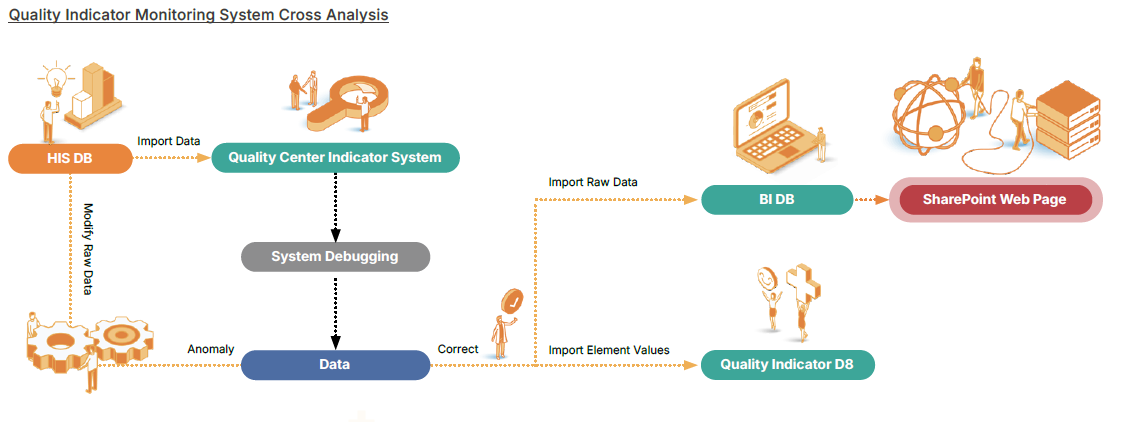
-
Benefits of Quality Indicator Management
NCKU Hospital firmly believes that a culture of total quality must be rooted in the daily practice of every employee. In addition to continuously monitoring indicators and stimulating improvement actions, the Hospital also implements review and reward mechanisms to ensure that quality management is embedded into each unit’s daily workflow, thereby driving the sustainable enhancement of healthcare quality. With two initiatives—“Promoting Continuous Quality Improvement through Quality Indicator Management” and “Inter-Hospital Sharing and Collaborative Growth”—the Hospital earned both Silver and Gold Awards in the Taiwan Healthcare Quality Improvement Campaign, demonstrating the solid results of cultivating a deep quality culture.
